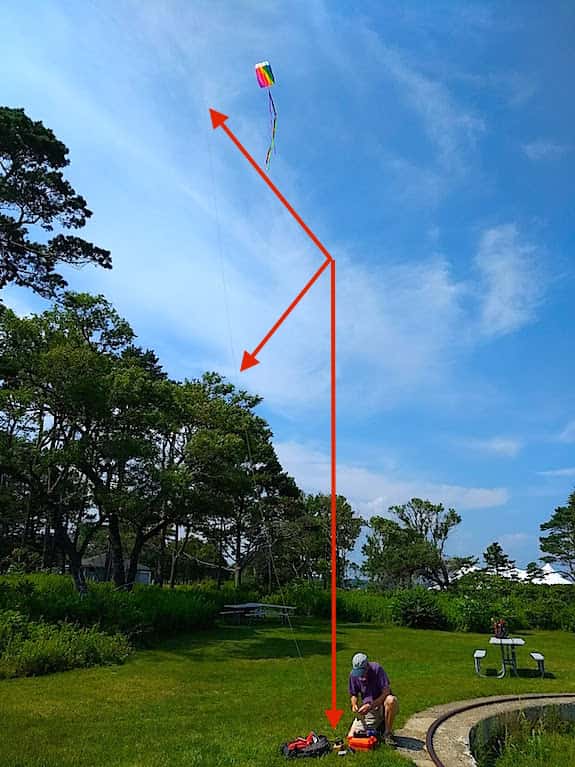
This cheap HF antenna is 29-feet long. The antenna works on all HF bands from 80 to 6 meters. It cost me less than $2 US. What more can you ask for? Oh, you want to know how I got it up in the air with the kite? CLICK or TAP HERE now to read all about how we made QSOs with the kite antenna! Copyright 2018 Tim Carter
Cheap HF Antenna – Just Use A Simple Wire
A cheap HF antenna can be made using a simple piece of wire. You can’t get much cheaper than that. Yes, a giant yagi antenna on a tower would be ideal, but you said you wanted cheap.
The key is the wire can only be one of a few lengths if you want it to work on just about all the high-frequency (HF) amateur radio bands here in the USA and the rest of the world.
Related Link
Stay Away From 1/4 and Half-Wave Lengths
My friend Dave Benson, K1SWL, is an electrical engineer and the founder of Small Wonders Lab. When I asked him about these antennas, here’s what he had to say:
“A half-wave – or its multiples – presents a high impedance when fed at one end.
A quarter-wave – and its odd multiples- presents a low impedance when fed at one end. This low-impedance situation is much easier for most tuners to handle. A counterpoise – whether a length of wire or the outside of a coax shield- is highly recommended.
It gets confusing when a half-wavelength wire is fed in the center. It looks out into two quarter-wavelengths of wire, so its impedance is low. Move the feed point to one end, though, and the impedance is quite high.
Geek stuff: If you move the feed point partway toward one end, the feed point impedance is higher – but it’s still a resonant antenna.”
For a single length of wire to work, you need two things:
- a tuner
- the wire length that’s not too close to a quarter or half-wave of the frequencies you want to ply
End-fed wire antennas tend to create very high impedance and a tuner will need help to get a low SWR. You might need to use a 9:1 unun or some balun at the end of the wire to help lower the impedance.
It’s important to realize that an antenna that is a half or quarter-wavelength of the band you’re working on should create a low, or lower, impedance and your tuner should be able to give you a nice low SWR match for your radio.
If you want to operate on multiple bands from a single simple wire antenna, you need to be sure the length of the wire is not a full, half, or quarter wave of the popular HF bands you intend to transmit and receive on.
Fortunately, Jack, VE3EED got out his trusty calculator and did all the work for you.
What are Ideal Lengths for a Cheap HF Antenna?
Here are the lengths, in feet, your cheap HF antenna should be so you can use one antenna to work on multiple bands:
- 29
- 35.5
- 41
- 58
- 71
- 84
- 107
- 119
- 148
- 203
- 347
- 407
- 423
Jack’s a silent key and I know I’m thankful for the work he did to come up with the lengths you can find in this column.
Do You Need A Counterpoise Wire?
I find a counterpoise about 17 feet long works well if I want to get on 40 meters. You can experiment with different lengths. Steve Galchutt, WG0AT, uses a 58-foot wire length with a 25-foot counterpoise.
Do You Need a Balun or Unun?
I connect my 29-foot cheap HF antenna to a 9:1 unun to lower the impedance. This makes less work for the tuner and I can almost always count on a very low SWR using the internal tuner in my Elecraft KX3 or KX2.

Do think these lengths would work for a vertical, using a group plane ?